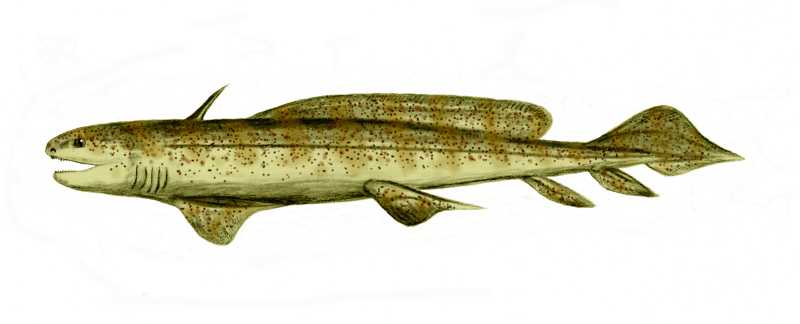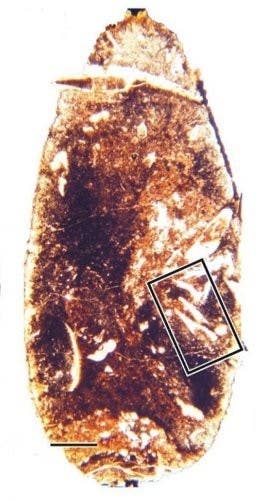A small tooth in a fecal sample confirms that the fierce predator ate its young.

Orthacanthus was the top predator of its day – in freshwater. If you lived 300 million years ago in a river or a swamp, you would fear it, and for good reason. Its body reached nearly 10 feet (3 meters) in length and the shark possessed a peculiar set of double-fanged teeth. It was an efficient and ruthless killer. A new study showed just how ruthless it was: it didn’t shy away from eating its own.
Researchers found a coprolite (a fecal fossil) in a famous coal field in New Brunswick, Canada, and Trinity College PhD candidate Aodhán Ó Gogáin was able to examine what it ate. Identifying these coprolites is relatively easy, because the species had a distinctive corkscrew rectum, creating spiral-shaped feces.

Rather surprisingly, Ó Gogáin found the tooth of a young Orthacanthus in the feces, indicating that the shark ate its young. It’s not exactly clear why this happened, but there are a few theories. The reason is probably connected to a shifting food regime. During the time, Orthacanthus was terrorizing coastal swamps, but marine fish were starting to expand their territory, moving inland more and more.
“During this invasion of fresh water, sharks were cannibalizing their young in order to find the resources to keep on exploring into the continental interiors,” study co-author Howard Falcon-Lang, of Royal Holloway University of London, told the BBC.
“It’s possible that Orthacanthus used inland waterways as protected nurseries to rear its babies, but then consumed them as food when other resources became scarce,” he said in a statement.
Orthacanthus could have probably moved back and forth between sweet and marine water.
“Orthacanthus was probably a bit like the modern day bull shark,” said Ó Gogáin, “in that it was able to migrate backwards and forwards between coastal swamps and shallow seas. This unusual ecological adaptation may have played an important role in the colonization of inland freshwater environments.”
Journal Reference: Fish and tetrapod communities across a marine to brackish salinity gradient in the Pennsylvanian (early Moscovian) Minto Formation of New Brunswick, Canada, and their palaeoecological and palaeogeographical implications.






